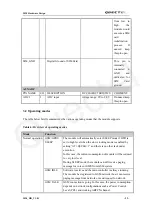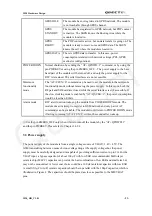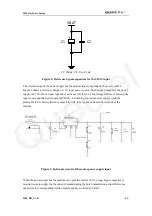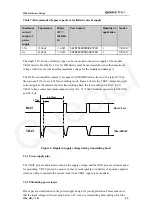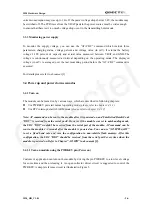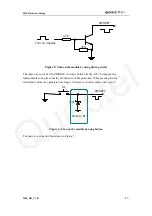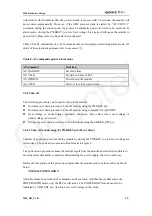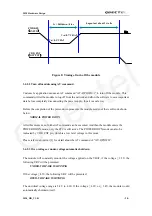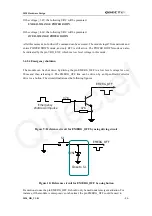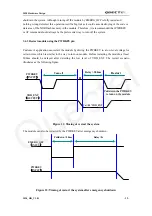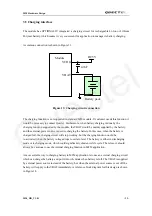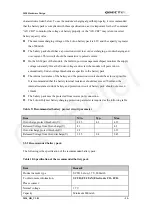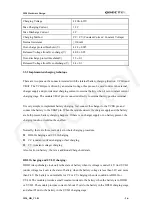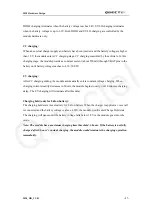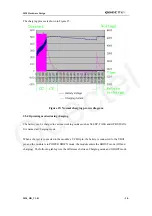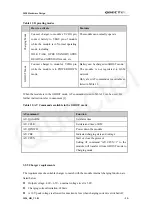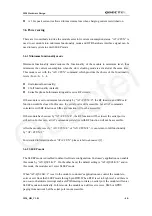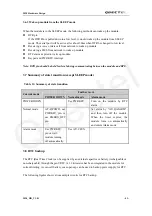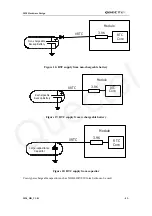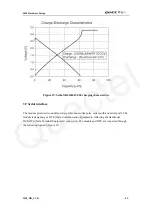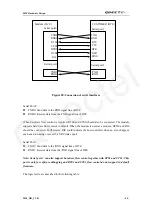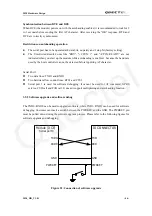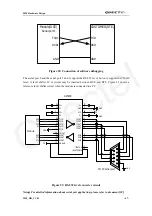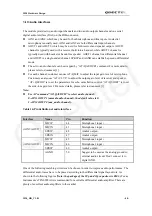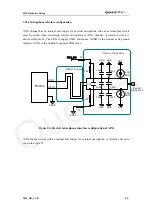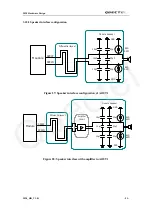
M20 Hardware Design
Charging Voltage
4.200~4.23V
Max Charging Current
1.2C
Max Discharge Current
2C
Charging Method
CC / CV (Constant Current / Constant Voltage)
Internal resistance
≤
130m
Ω
Over-charge protect threshold.(V)
4.28 ± 0.025
Released Voltage from Over-charge(V)
4.08 ± 0.05
Over-discharge protect threshold(V)
2.3± 0.1
Released Voltage from Over-discharge(V)
2.4± 0.1
3.5.3 Implemented charging technique
There are two pins on the connector related with the internal battery charging function: VCHG and
VBAT. The VCHG pin is driven by an external voltage, this pin can be used to detect an external
charger supply and provide most charging current to external battery when it is in constant current
charging stage. The module VBAT pin is connected directly to external battery positive terminal.
It is very simple to implement battery charging. Just connect the charger to the VCHG pin and
connect the battery to the VBAT pin. When the module detects the charger supply and the battery
are both present, battery charging happens. If there is no charger supply or no battery present, the
charging function would not be enabled.
Normally, there are three main states in whole charging procedure.
z
DDLO charging and UVLO charging
z
CC (constant current) charging or fast charging
z
CV (constant voltage) charging
Also for Li-ion battery , there is a additional Charge hold state.
DDLO charging and UVLO charging:
DDLO (deep discharge lock out) is the state of battery when its voltage is under 2.4V. And UVLO
(under voltage lock out) is the state of battery when the battery voltage is less than 3.2V and more
than 2.4V. The battery is not suitable for CC or CV charging when its condition is DDLO or
UVLO. The module provides a small constant current to the battery when the battery is in DDLO
or UVLO. The module provides current of about 15mA to the battery in the DDLO charging stage,
and about 55mA to the battery in the UVLO charging stage.
M20_HD_V1.01
- 36 -
Quectel

